# Portainer Staging Server Deployment
# Create a Stack on Portainer
# 1) Log into Portainer
Go to https://portainer.stage.14four.com/ and login using your 14Four google account.
# 2) Add your new stack
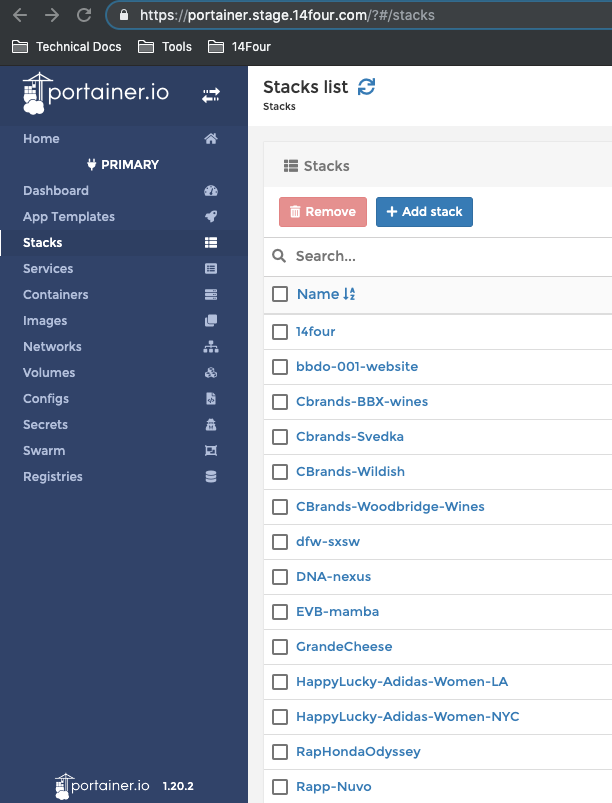
# 3) Create your compose file.
TIP
You can use the example compose file below as a template, but uou will need to edit the compose to use your ENV variables, image name, URL, etc.
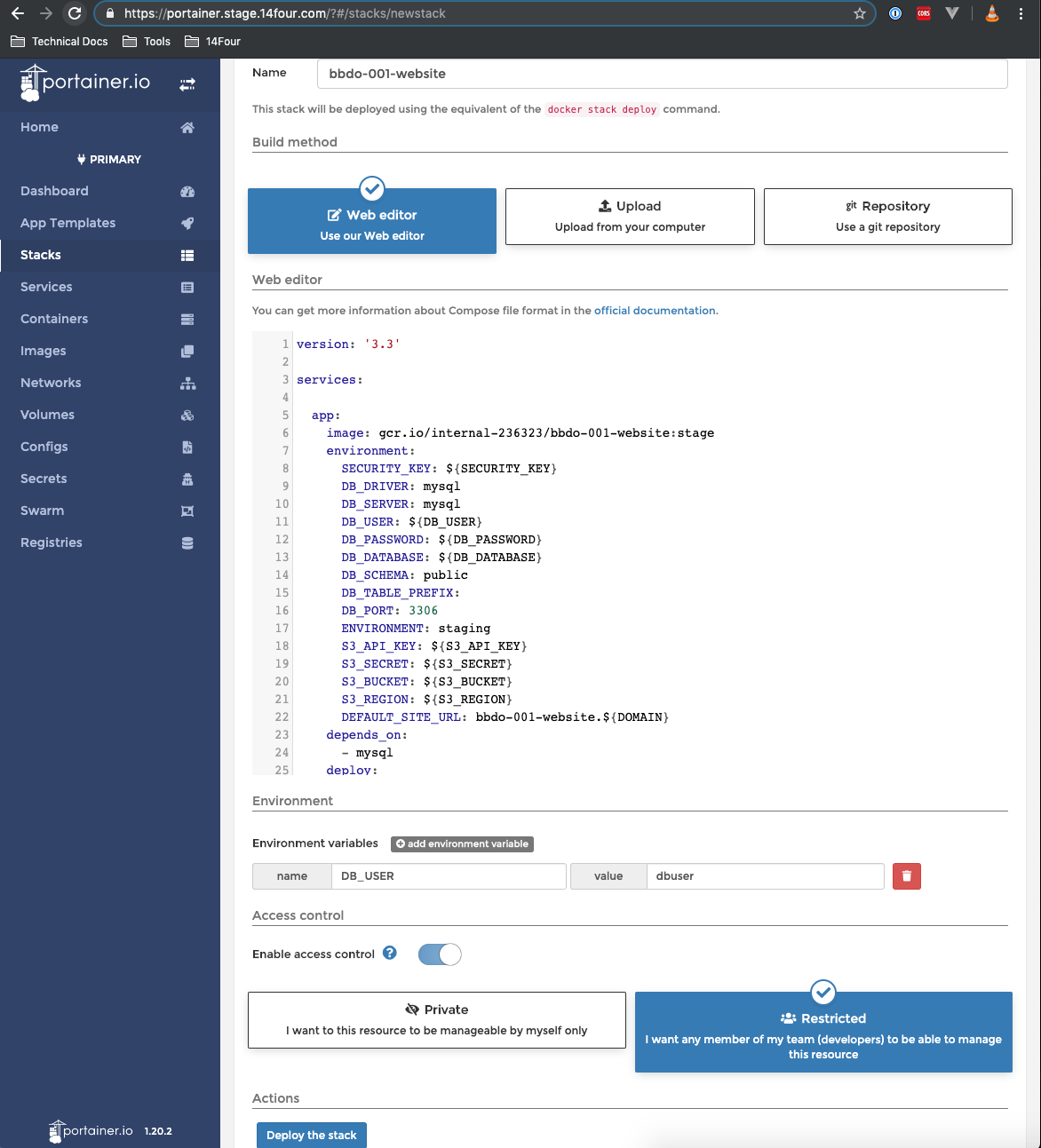
version: '3.3'
services:
app:
image: gcr.io/internal-236323/agency-client-001-website:stage
environment:
SECURITY_KEY: ${SECURITY_KEY}
DB_DRIVER: mysql
DB_SERVER: mysql
DB_USER: ${DB_USER}
DB_PASSWORD: ${DB_PASSWORD}
DB_DATABASE: ${DB_DATABASE}
DB_SCHEMA: public
DB_TABLE_PREFIX:
DB_PORT: 3306
ENVIRONMENT: staging
S3_API_KEY: ${S3_API_KEY}
S3_SECRET: ${S3_SECRET}
S3_BUCKET: ${S3_BUCKET}
S3_REGION: ${S3_REGION}
DEFAULT_SITE_URL: agency-client-001-website.${DOMAIN}
depends_on:
- mysql
deploy:
resources:
limits:
cpus: '0.75'
memory: 300M
labels:
- traefik.stagenew.frontend.rule=Host:agency-client-001-website.${DOMAIN}
- traefik.tags=${TRAEFIK_PUBLIC_TAG:-proxy}
- traefik.enable=true
- traefik.port=8080
- traefik.docker.network=proxy
networks:
- internal
- proxy
mysql:
image: mysql:5.7.22
restart: unless-stopped
ports:
- 0:3306
environment:
MYSQL_DATABASE: ${DB_DATABASE}
MYSQL_USER: ${DB_USER}
MYSQL_PASSWORD: ${DB_PASSWORD}
MYSQL_ROOT_PASSWORD: ${DB_ROOT_PASSWORD}
volumes:
- agency-client-001-website-mysql-db:/var/lib/mysql
networks:
- internal
# Setup Networks
# internal for internal communications
# Proxy for Traefik communications
networks:
internal:
external: false
proxy:
external: true
volumes:
agency-client-001-website-mysql-db:
driver: rexray/ebs
driver_opts:
size: 1
# Create a Pipeline on Bitbucket
# 1) In your bitbucket repo Navigate to the pipelines tab.
Select Docker and add a bitbucket-piplines.yaml file.
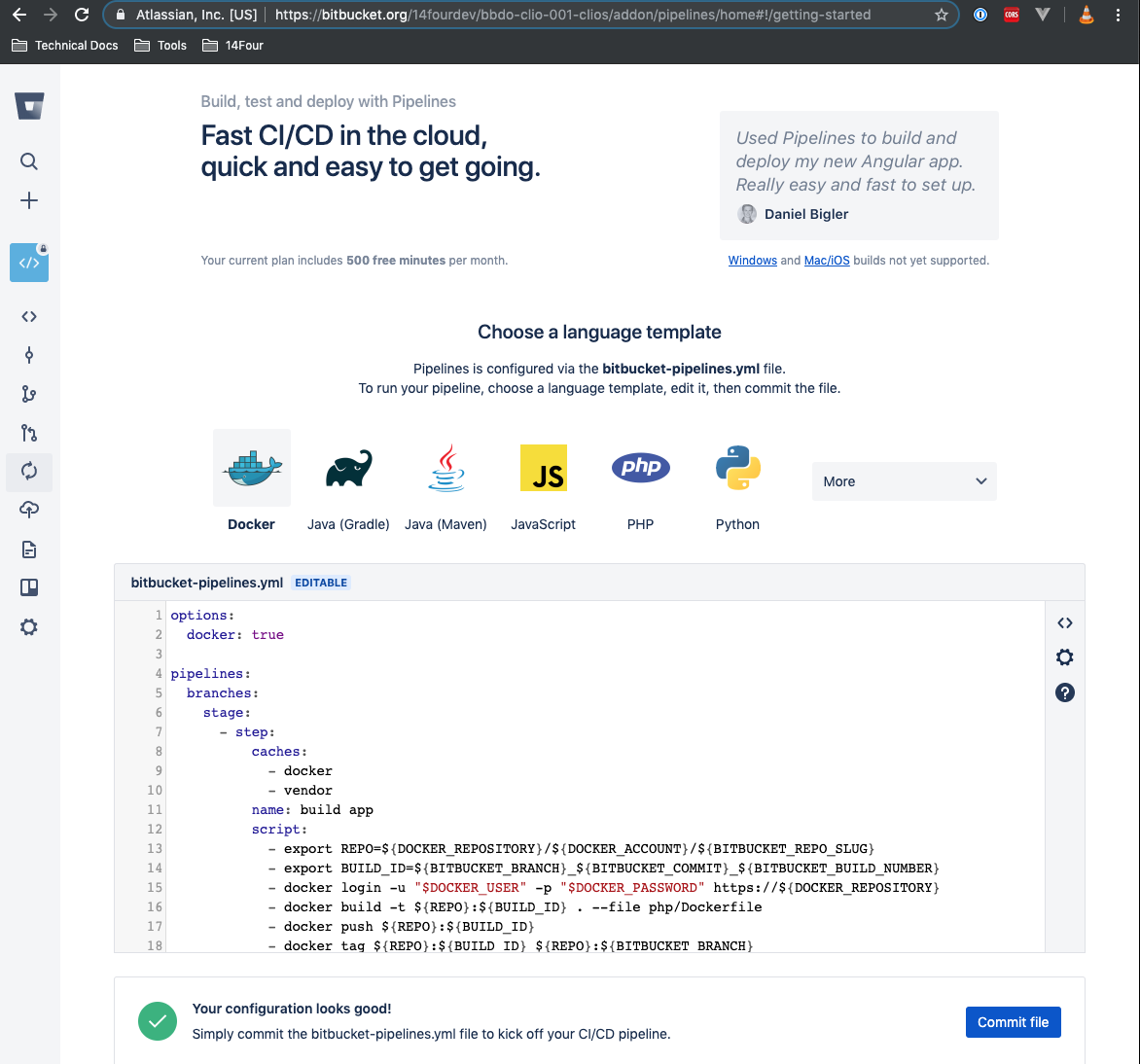
# 2) You can use this bitbucket-pipelines.yaml file as a template.
options:
docker: true
pipelines:
branches:
stage:
- step:
caches:
- docker
- vendor
name: build app
script:
- export REPO=${DOCKER_REPOSITORY}/${DOCKER_ACCOUNT}/${BITBUCKET_REPO_SLUG}
- export BUILD_ID=${BITBUCKET_BRANCH}_${BITBUCKET_COMMIT}_${BITBUCKET_BUILD_NUMBER}
- docker login -u "$DOCKER_USER" -p "$DOCKER_PASSWORD" https://${DOCKER_REPOSITORY}
- docker build -t ${REPO}:${BUILD_ID} . --file php/Dockerfile
- docker push ${REPO}:${BUILD_ID}
- docker tag ${REPO}:${BUILD_ID} ${REPO}:${BITBUCKET_BRANCH}
- docker push ${REPO}:${BITBUCKET_BRANCH}
- step:
name: deploy
image: alpine
script:
- apk add --update curl
- curl -XPOST $APP_WEBHOOK
definitions:
caches:
vendor: vendor
services:
docker:
memory: 2048
TIP
The ENV variables in bitbucket-piplines.yaml are pulled from the bibucket server. You do not need to set them yourself.
# 3) Go back to the portainer stack you created and enable webhooks for your app.
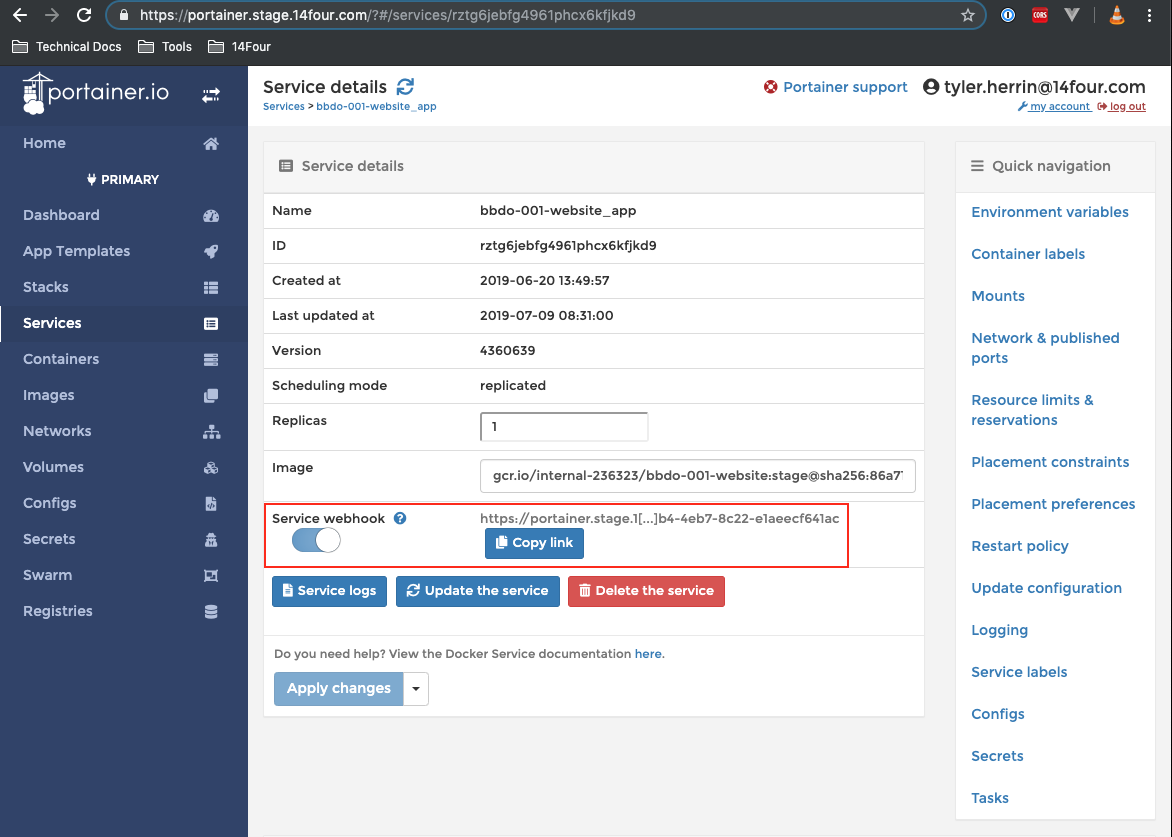
# 4) In your bitbucket repo navigate to Settings->Repository Variables
Add the webhook you just enabled in portainer as a reposistory varible in your bitbucket repo.
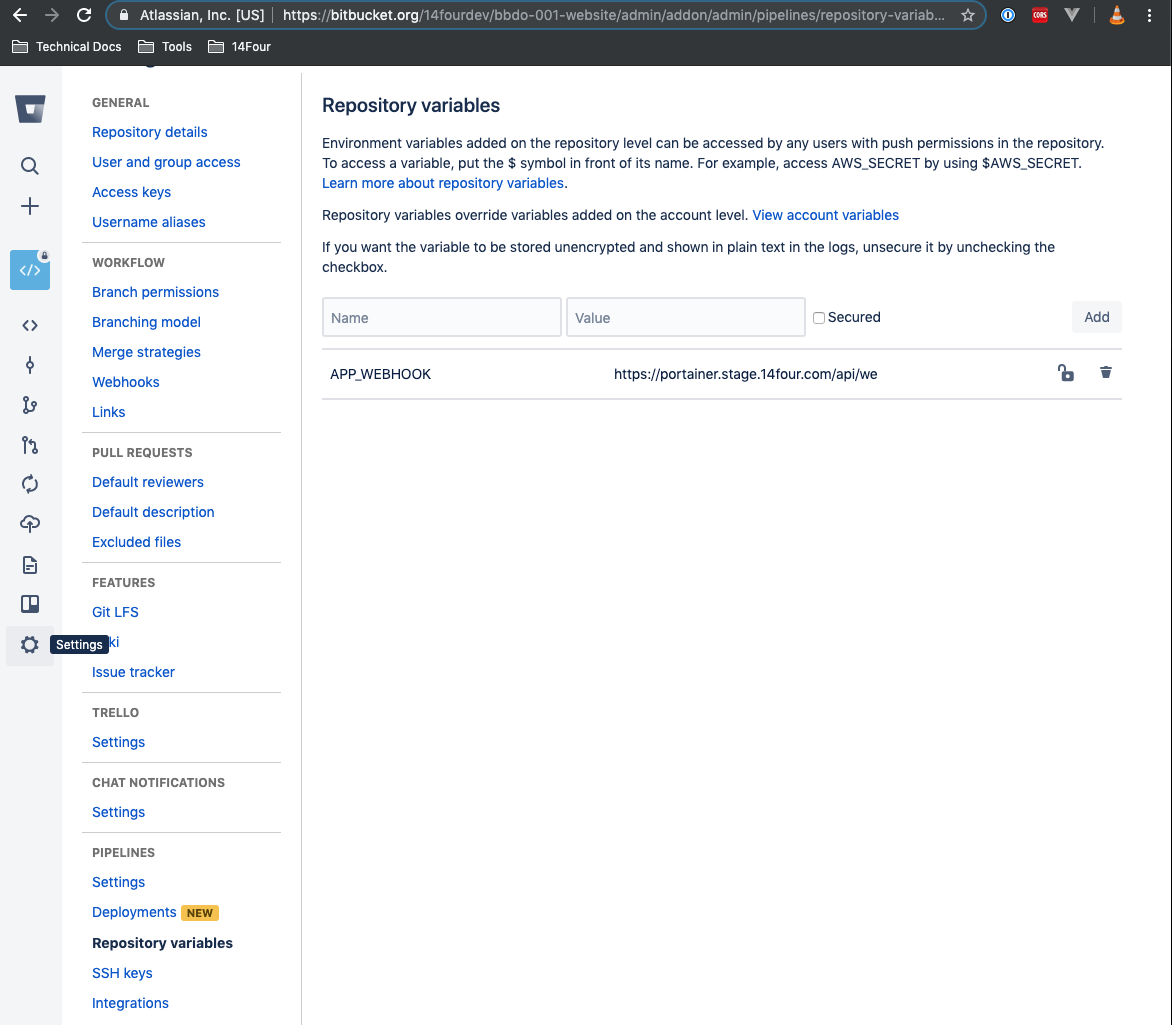
WARNING
If your web app has queue and migration containers they will also need their webhooks enabled and setup in bitbucket-pipelines.yaml and in your bitbucket repository variables to have an automated deploy.
# Congrats, your web app should now deploy when you push to your stage branch on bitbucket!
← Frontend Staging SSL →